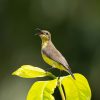The Majestic Deer: Exploring the Grace and Significance of the Image Above
$17.00
In the image above, the deer’s silent vigil amidst the dark, textured backdrop evokes a sense of tranquility and contemplation. The deer’s poised stance and alert eyes suggest a creature finely attuned to its surroundings, embodying the delicate balance between vigilance and serenity. This moment, frozen in time, captures the essence of the deer’s role as both a gentle grazer and a vigilant guardian of the forest. It is a powerful reminder of the quiet, often unnoticed moments of beauty and grace that nature offers, inviting us to pause and reflect on the wonders of the natural world around us.
13 in stock
The image above captures a striking moment in the life of a deer, standing amidst a dark, textured background. This photograph not only highlights the elegance and poise of the deer but also invites us to delve into the ecological and cultural significance of these magnificent creatures. In this comprehensive SEO-optimized article, we will explore various aspects of this captivating image, from the biological characteristics and behaviors of deer to their role in ecosystems and human culture. This analysis aims to provide a rich understanding of the scene depicted and enhance its visibility in search engines.
The Subject: A Closer Look at Deer
Biological Characteristics
Deer are part of the Cervidae family, which includes species such as elk, moose, and reindeer. They are known for their distinctive antlers, which are typically found on males:
- Antlers: Unlike horns, antlers are shed and regrown annually. They are used for defense, foraging, and mating displays.
- Diet: Deer are herbivores, primarily feeding on a variety of vegetation, including leaves, shoots, fruits, and grasses.
- Adaptability: Deer are highly adaptable and can thrive in diverse habitats, from forests and grasslands to wetlands and urban areas.
Behavioral Traits
Deer exhibit a range of behaviors essential for their survival and reproduction:
- Grazing: Deer are often seen grazing in open areas, where they consume large quantities of plant material to sustain their energy needs.
- Social Structure: Many deer species live in groups, known as herds, which provide protection against predators.
- Reproduction: During the mating season, or rut, males compete for the attention of females through displays of strength and dominance.
The Setting: Dark, Textured Background and Its Symbolism
Habitat and Ecosystem
The dark, textured background in the image provides a stark contrast to the deer’s light, earthy tones. This setting likely represents a forest floor, which plays a crucial role in the ecosystem:
- Soil Composition: The forest floor is rich in organic matter, supporting a diverse array of plant and animal life.
- Nutrient Cycling: Decomposing plant material enriches the soil, facilitating nutrient cycling and fostering plant growth.
- Microhabitats: The forest floor creates microhabitats for various organisms, contributing to biodiversity.
Ecological Interactions
Deer play a significant role in their ecosystems through their interactions with other species:
- Seed Dispersal: By consuming fruits and plants, deer help disperse seeds, aiding in plant propagation.
- Predation: Deer are prey for several predators, including wolves, bears, and big cats, contributing to the food chain.
- Herbivory: Deer influence plant community dynamics through their grazing habits, which can shape vegetation patterns and forest structure.
The Art of Wildlife Photography
Techniques and Composition
Wildlife photography, as demonstrated by the image above, requires skill and an understanding of animal behavior. Key elements of effective wildlife photography include:
- Lighting: The use of low light in the image highlights the deer’s features and creates a dramatic effect.
- Composition: The composition, with the deer positioned off-center, adheres to the rule of thirds, creating a visually appealing balance.
- Focus: The sharp focus on the deer against the blurred background draws attention to the subject, emphasizing its presence.
Ethical Considerations
Ethical wildlife photography is crucial to ensuring the well-being of the subjects and their habitats:
- Respectful Distance: Photographers should maintain a safe distance to avoid disturbing the animals.
- Habitat Preservation: Highlighting the beauty of wildlife can raise awareness about the importance of conserving natural habitats.
The Deer’s Significance in Human Culture
Cultural Symbolism
Deer have held symbolic significance in various cultures throughout history:
- Spiritual Symbolism: In many cultures, deer are considered symbols of grace, gentleness, and renewal.
- Mythology and Folklore: Deer often appear in myths and stories, representing qualities such as wisdom, agility, and connection to nature.
- Art and Literature: Deer have been depicted in art and literature for centuries, embodying beauty and serenity.
Conservation Efforts
The conservation of deer and their habitats is vital for maintaining ecological balance and biodiversity:
- Protected Areas: Establishing protected areas and wildlife reserves helps safeguard deer populations and their ecosystems.
- Sustainable Practices: Promoting sustainable land use practices and reducing habitat fragmentation are essential for deer conservation.
- Research and Education: Ongoing research and public education efforts are crucial for understanding deer ecology and promoting coexistence with human activities.
Conclusion
The image of the deer against a dark, textured background is more than just a visually striking snapshot; it is a window into the captivating world of deer and their ecological and cultural significance. By exploring the biological characteristics, behaviors, and ecological roles of deer, we can appreciate the intricate balance
Be the first to review “The Majestic Deer: Exploring the Grace and Significance of the Image Above” Cancel reply
Related products
Animals












Reviews
There are no reviews yet.